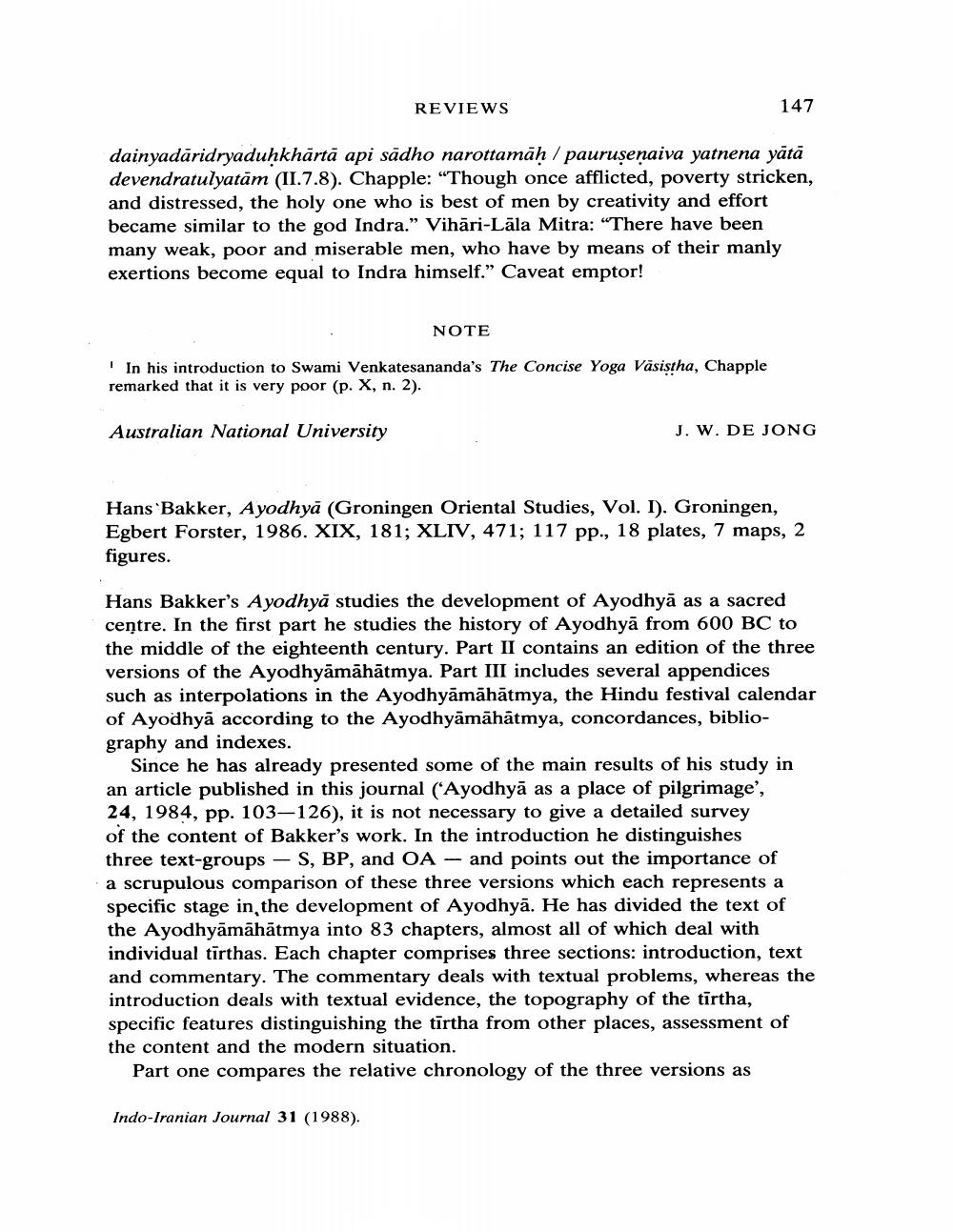Book Title: Book Reviews Author(s): J W De Jong Publisher: J W De Jong View full book textPage 5
________________ REVIEWS 147 dainyadaridryaduhkhārtā api sādho narottamāḥ / paurusenaiva yatnena yātā devendratulyatām (II.7.8). Chapple: "Though once afflicted, poverty stricken, and distressed, the holy one who is best of men by creativity and effort became similar to the god Indra." Vihāri-Lāla Mitra: “There have been many weak, poor and miserable men, who have by means of their manly exertions become equal to Indra himself.” Caveat emptor! NOTE "In his introduction to Swami Venkatesananda's The Concise Yoga Väsistha, Chapple remarked that it is very poor (p. X, n. 2). Australian National University J. W. DE JONG Hans Bakker, Ayodhyā (Groningen Oriental Studies, Vol. I). Groningen, Egbert Forster, 1986. XIX, 181; XLIV, 471; 117 pp., 18 plates, 7 maps, 2 figures. Hans Bakker's Ayodhyā studies the development of Ayodhyā as a sacred centre. In the first part he studies the history of Ayodhyā from 600 BC to the middle of the eighteenth century. Part II contains an edition of the three versions of the Ayodhyāmāhātmya. Part III includes several appendices such as interpolations in the Ayodhyāmāhātmya, the Hindu festival calendar of Ayodhyā according to the Ayodhyāmāhātmya, concordances, bibliography and indexes. Since he has already presented some of the main results of his study in an article published in this journal ("Ayodhyā as a place of pilgrimage', 24, 1984, pp. 103–126), it is not necessary to give a detailed survey of the content of Bakker's work. In the introduction he distinguishes three text-groups – S, BP, and OA – and points out the importance of a scrupulous comparison of these three versions which each represents a specific stage in the development of Ayodhyā. He has divided the text of the Ayodhyāmāhātmya into 83 chapters, almost all of which deal with individual tirthas. Each chapter comprises three sections: introduction, text and commentary. The commentary deals with textual problems, whereas the introduction deals with textual evidence, the topography of the tirtha, specific features distinguishing the tirtha from other places, assessment of the content and the modern situation. Part one compares the relative chronology of the three versions as Indo-Iranian Journal 31 (1988).Page Navigation
1 ... 3 4 5 6 7 8 9 10 11 12 13 14 15 16 17 18 19 20 21 22 23 24
